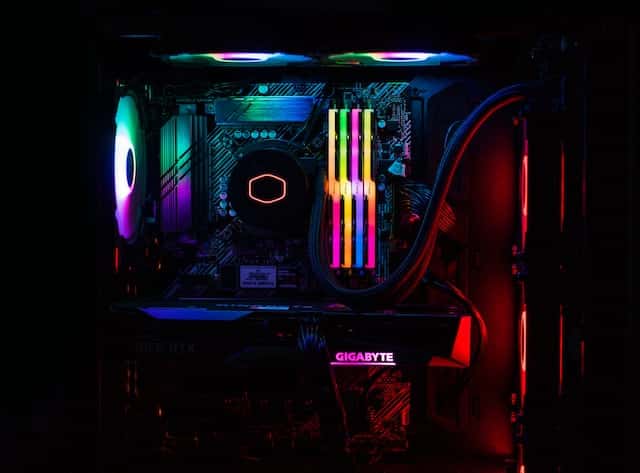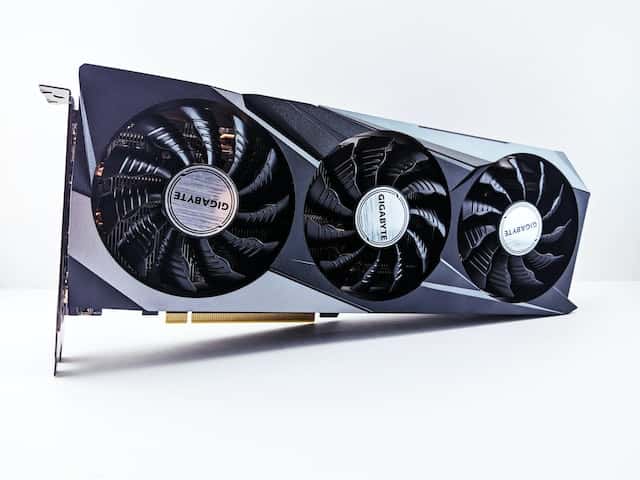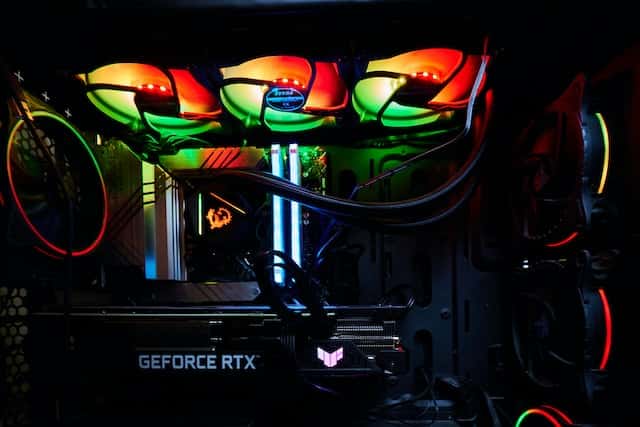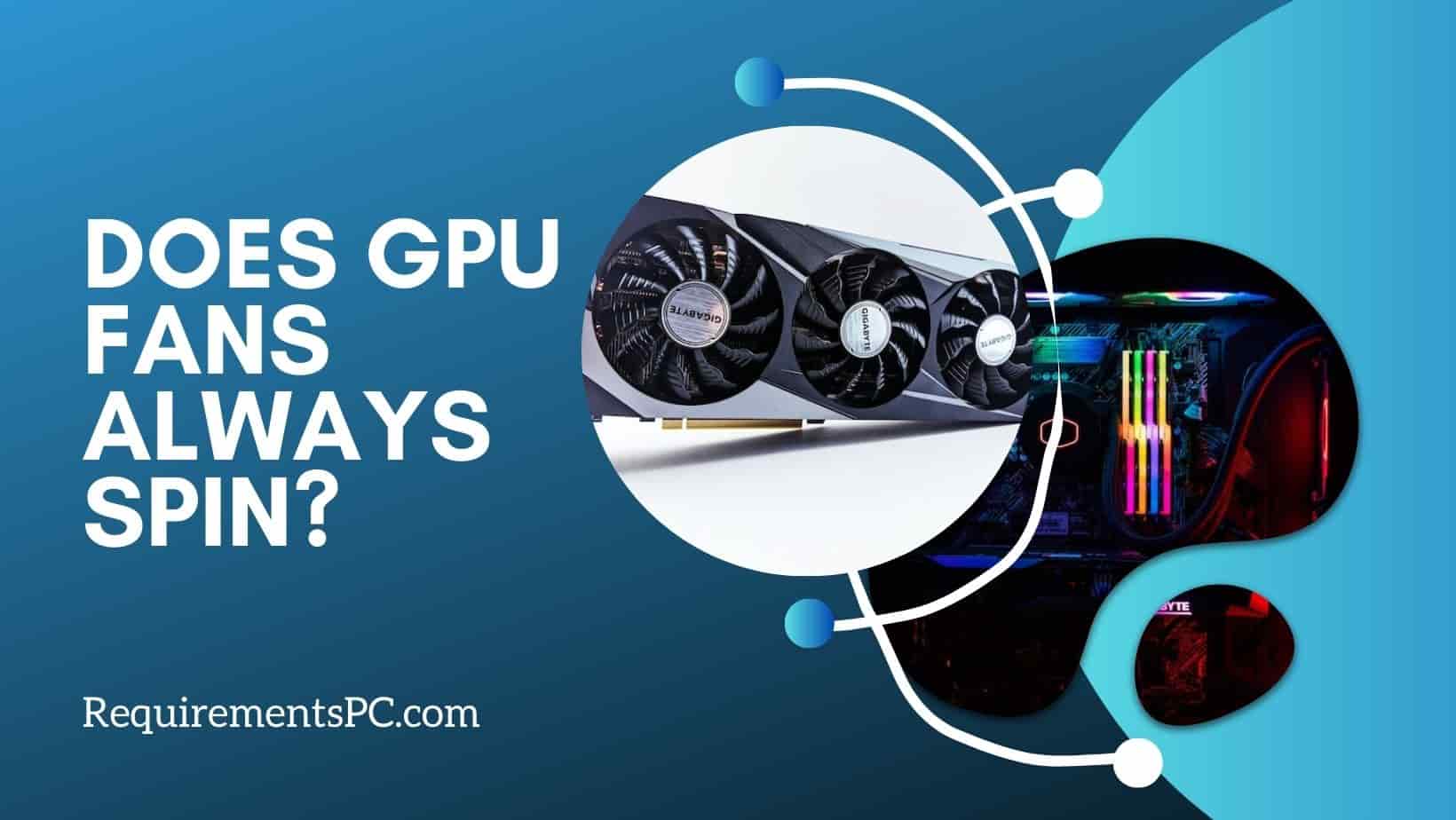Graphics Processing Units (GPUs) play a critical role in contemporary computers by handling the processing-intensive tasks related to displaying high-quality graphics and visuals. To ensure optimal performance of this machinery, it is pertinent to comprehend their functionality and capabilities. A commonly asked question is whether GPU fans operate continuously. The answer is not definitive and depends on various factors.
Some users may notice that their GPU fans are not spinning at all, while others may experience fans that spin too fast or too loudly. In this blog post, we will delve into the topic of GPU fans and explore the questions of whether it is normal for them to not spin, how to fix them if they are spinning too fast, and how long they typically last. We will also discuss what temperature ranges are considered normal for GPUs, and provide some tips for keeping your GPU functioning optimally. By the end of this post, you will have a better understanding of how your GPU operates.
Does GPU Fans Always Spin?
The fans of a graphics processing unit (GPU) are integral to its cooling system during high-demand operations. Despite this, not all GPU models run with constantly spinning fans. Some units employ zero-fan technology, which allows fans to remain inactive until the GPU reaches a predetermined temperature. This method not only reduces noise levels but also promotes energy efficiency by eliminating the need for continuous fan operation.
In contrast, certain graphics cards are equipped with fans that operate continuously, irrespective of the workload. This fan setup is usually observed in GPUs that belong to the entry-level and mid-range categories, as they tend to produce less heat and consequently demand less cooling. Nonetheless, even though the fans run constantly, they may not function at their highest speed at all times. Certain graphics cards come equipped with fan control mechanisms that regulate the fan speed in response to the GPU temperature, thereby striking a balance between cooling efficiency and noise emission.

Is It Normal For GPU Fans To Not Spin?
It is common for purchasers of graphics processing units (GPUs) to observe that their units’ fans are not always active. This observation can sometimes cause concern, as users may question the functionality of their GPU. However, this is a normal circumstance. GPUs are often equipped with an internal fan control system that activates the fans solely when needed. This is done to minimize noise and energy consumption, which may be superfluous when the GPU is not operating at its maximum capacity.
Generally, when a GPU is idling or performing basic tasks, the fans will remain off or spin at a low speed to maintain a low noise level. It is only when the GPU is under heavy load, such as when running graphically intensive games or applications, that the fans will spin at higher speeds to keep the GPU cool.

How Do I Fix My GPU Fan From Spinning Fast?
Should you encounter an issue with your GPU fan spinning excessively fast, there are various measures you can take to address the problem. Primarily, it is advisable to inspect the fan settings in your graphics card software. Adjusting the fan curve to a lower setting or disabling automatic fan control may be necessary. If these adjustments do not resolve the issue, cleaning the fan blades and surrounding area using compressed air or a soft brush to eliminate any dust or debris that may be impeding the fan’s performance is recommended.
Another potential solution to remedy a GPU fan spinning too fast is to replace the thermal paste on the GPU. Overheating caused by aged or dry thermal paste can trigger the fan to spin faster, leading to an increase in noise levels. If you are not experienced with this type of maintenance, it may be best to seek assistance from a professional technician. To avoid the issue altogether, it is important to maintain sufficient airflow within your computer case by regularly cleaning out dust and debris, ensuring all components are functioning correctly and are properly installed.
What Is The Best Way To Cool a GPU?
Cooling a GPU can be achieved through various methods, but the most commonly used option is through the use of a fan. Fans work by circulating air over the GPU to dissipate heat. The effectiveness of the cooling largely depends on the size and speed of the fan. Generally, a larger fan with higher RPMs is more effective than a smaller, slower fan.
Another option for cooling a GPU is to use liquid cooling. Liquid cooling involves circulating a coolant through a small tube that runs over the surface of the GPU. The coolant absorbs heat as it passes over the GPU and then carries it away to a radiator where it is dissipated into the air. This method can be more effective than using a fan, but it is also more expensive and requires more maintenance.

How Long Do Fans Last On GPU?
A common inquiry among gamers and computer enthusiasts pertains to the longevity of GPU fans. The lifespan of a GPU fan is influenced by several factors, including the fan’s quality, usage, and operating environment. While the typical lifespan of a GPU fan is around two to four years, there is no definitive timeline. It is advisable to monitor your GPU’s temperature and fan performance closely. Any unusual sounds or reduced airflow may indicate fan failure and necessitate replacement.
Typically, the replacement of a malfunctioning fan with a new one can effectively prolong the lifespan of your Graphics Processing Unit (GPU). However, if a timely replacement of the fan is not undertaken, it can result in overheating and irreparable damage to the hardware. Ultimately, the durability of your GPU’s fan is contingent on the extent of your system maintenance and the level of strain it endures.
What GPU Temp Is Normal?
Monitoring your GPU’s temperature is crucial when engaging in gaming or graphics-intensive tasks. It’s important to know what temperature range is considered normal for your specific graphics card, workload, and surrounding temperature. Typically, most GPUs are engineered to function optimally within a temperature range of 60°-80° Celsius or (149° to 185° Fahrenheit). Nevertheless, it’s vital to understand that prolonged exposure to temperatures above 85°C can result in thermal throttling and even permanent damage to your graphics card.
On the other hand, temperatures consistently below 50°C may indicate a cooling system that is working too hard, which can also cause problems in the long run. To get a better idea of what GPU temp is normal for your specific setup, it’s recommended to use a tool like MSI Afterburner or HWMonitor to monitor your GPU temperature during various tasks.




